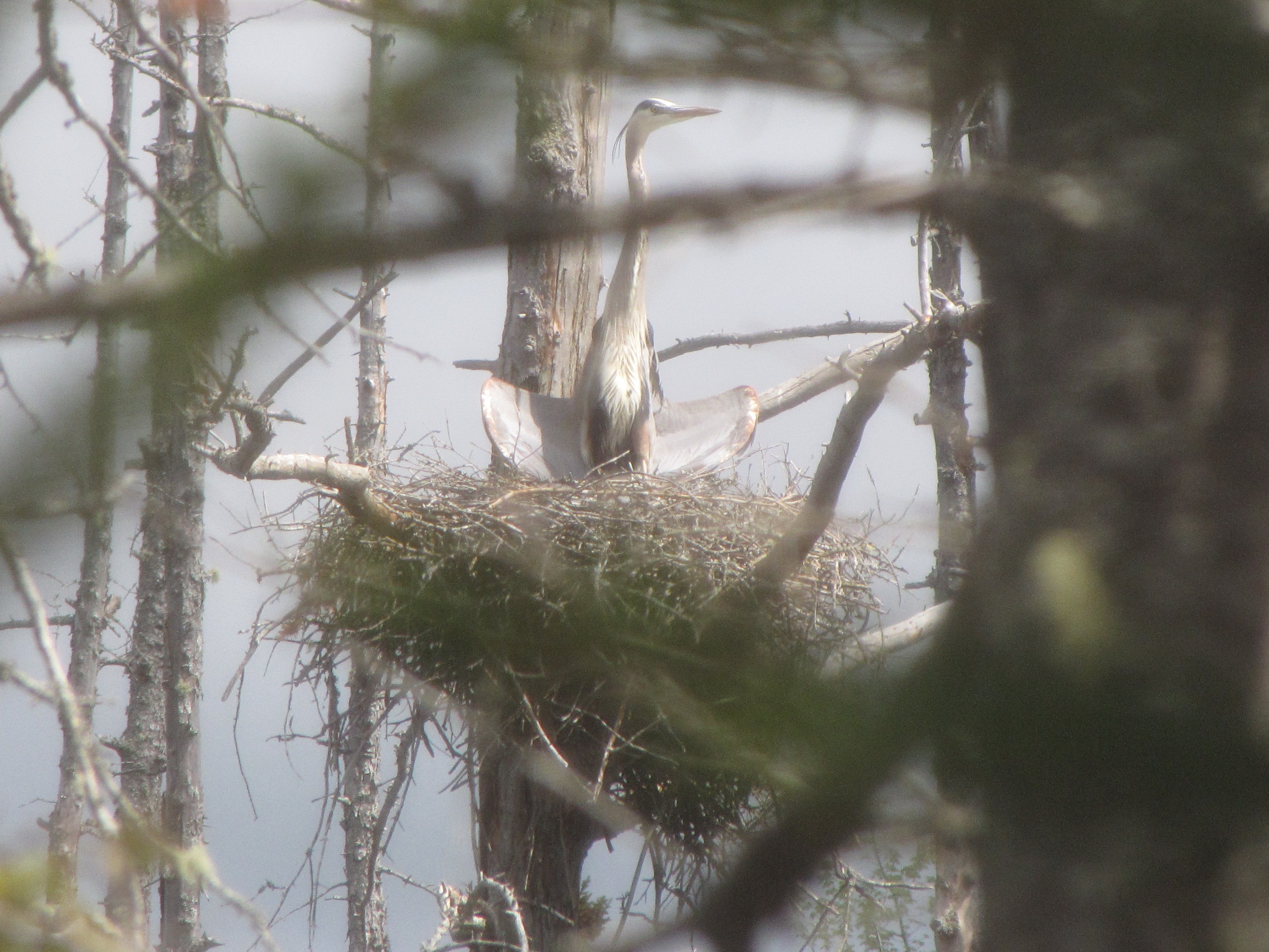July 26, 2012 at 9:49 am
We’ve had some hot sultry days this summer, and if you were smart you retreated to a shady spot or went for a swim at a nearby pond. But what about all those great blue heron nestlings that were sitting in their nests 20-100 feet up in a tree, often in full sun? Sure, their nest tree may be surrounded by water if it is a snag in a beaver flowage, but that water is completely inaccessible to a nestling who takes around 80 days to learn how to fly.
How do they keep cool on those 90+ degree days? Like humans, birds rely on evaporative cooling to release heat; however, birds do not have sweat glands like you and me. Instead, they lose heat through their respiratory tract. Some birds do this by panting, but others, including herons, do so by “gular flutter”. Gular flutter is a rapid vibration of the upper throat and thin floor of the mouth. By opening their mouths wide and rapidly flapping the thin gular membranes of the throat, they expose a large featherless area to moving air. To see what gular flutter looks like, click on the link below to a web album containing 2 short videos:
Gular Flutter Videos
Herons may also change their posture to keep cool. The “sunbathing” posture or “delta-wing” is sometimes assumed to aid in cooling the bird itself as well as to help shade its nest contents (eggs or nestlings). Often sunbathing is accompanied by gular flutter. The sunbathing posture I witnessed below was seen in mid-May on a day that was not noticeably hot (at least to me, but I was shaded by a blind). This adult most likely had eggs or newly hatched young in the nest, but it doesn’t appear that the sunbathing posture is serving to shade any nest contents here. The adult is actually facing into the sun. Perhaps this is one of many reasons that led to this nest’s failure? It was inactive only 1 week later.
[caption id="attachment_871" align="aligncenter" width="300"] Adult great blue heron "sunbathing".[/caption]
Adult great blue heron "sunbathing".[/caption]
 Adult great blue heron "sunbathing".[/caption]
Adult great blue heron "sunbathing".[/caption]Categories